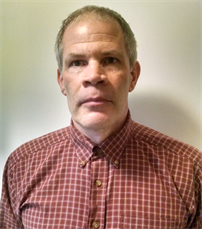 Jim Chisholm, a doctoral student in the Department of Nuclear Engineering at Texas A&M University, was awarded a fellowship with the Texas A&M University Mentored Research Program in Space Life Science. The fellowship provides for $22,000 in tuition and fees and includes a mandatory internship at Johnson Space Center in the summer. The internship requires participants to take four classes revolving around space life science and kinesiology as well as partake in two experiential training programs. The fellowship is also part of the space and life sciences certificate program that focuses on teaching students a combination of topics involving kinesiology, radio-biology and nutrition.
Jim Chisholm, a doctoral student in the Department of Nuclear Engineering at Texas A&M University, was awarded a fellowship with the Texas A&M University Mentored Research Program in Space Life Science. The fellowship provides for $22,000 in tuition and fees and includes a mandatory internship at Johnson Space Center in the summer. The internship requires participants to take four classes revolving around space life science and kinesiology as well as partake in two experiential training programs. The fellowship is also part of the space and life sciences certificate program that focuses on teaching students a combination of topics involving kinesiology, radio-biology and nutrition.
“We’re essentially looking at how to keep people healthy and happy going to Mars, preventing muscles from wasting away and protecting against radiation damage,” Chisholm said. “Muscles and bones atrophy in space and we have to develop countermeasures for long term space flight.”
Chisholm was encouraged to apply for the fellowship by his faculty adviser, Dr. John Ford, associate professor in the department Working with Ford, Chisholm studies microbes and radiation, specifically using microbes to generate electricity.
“My research project is trying to design a type of microbial fuel cell system,” Chisholm said. “We are looking at how a microbial fuel cell functions in low-earth orbit, and I suspect that some microbes have their metabolisms improve in this kind of environment, improving their ability to remove radium out of aqueous solutions.”
With the ability to remove radium out of aqueous solutions improved, the microbes could theoretically take things such as waste water and transform it into something usable. A microbial fuel cell could also provide other benefits to astronauts while working within the spacecraft. The use of nuclear engineering is pertinent in this research because radiation is used to improve the function of these microbes in generating electricity and other byproducts.
“The idea is to use something that could be used in a spacecraft, an item that has few moving parts, to generate electricity for the craft,” Chisholm said. “A microbial fuel cell can be configured to do a number of things that would be useful on a manned space mission.”
Prior to his studies in nuclear engineering, Chisholm served as an attorney, but felt he could be more productive and impactful with his time by contributing to the sciences.
“I was helping people in my job, but I wanted to get involved in something on a bigger scale and start producing something,” Chisholm said. “I started looking for something I felt was going to make a difference on a bigger scale.”
Chisholm will be conducting lower-orbit testing to send microbes and an apparatus into low-earth orbit to simulate various radiation conditions. This will help approximate the conditions of a real space flight.
“I really love to do this type of work but I never thought this was realistic to do stuff in space because it hasn’t been generating a lot of interest as I have seen lately,” Chisholm said. “I’m hoping for good results with my research and for the experiment to go well. I’m excited to see where we go from here.”
Contributing Author: Ryan Terry